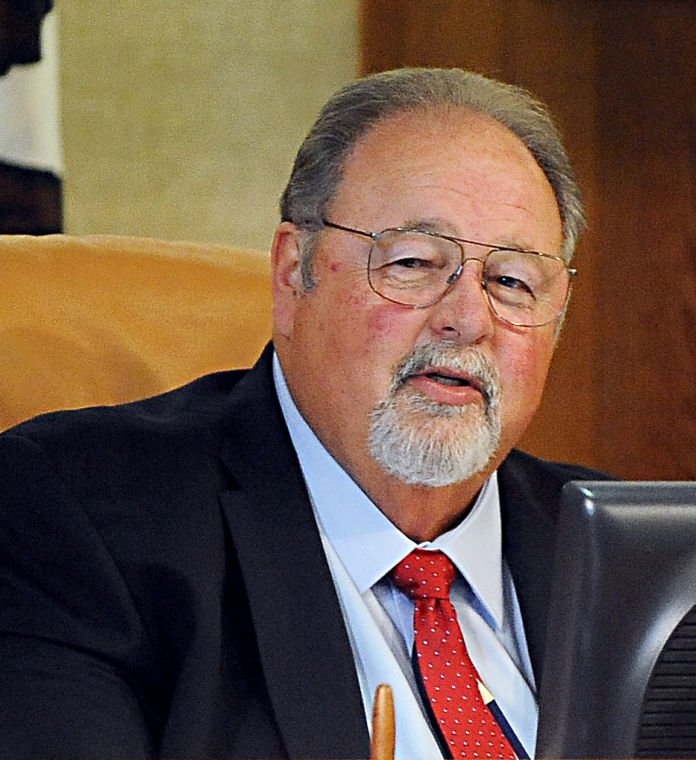With Election Day less than two months away, city officials are asking the community for support of the “Quality of Life” sales tax measure on the ballot. Mayor Don Gage and City Administrator Tom Haglund spoke at the Gilroy Chamber of Commerce’s Government Relations Committee meeting Sept. 12 and answered questions from the public.
The Chamber’s Board of Directors voted 9-1 Aug. 27 to oppose the measure that would raise Gilroy’s sales tax from 8.75 to 9.25 percent, citing a lack of accountability about where and how the revenue would be spent.
Per state law, revenue from a general-purpose sales tax measure must funnel into a city’s general fund. If city councils want to earmark money for certain programs and projects, the threshold for voter approval bumps up from a simple majority—50 percent, plus one vote—to a two-thirds majority.
Haglund explained that the reason the half-cent general-purpose sales tax increase, called Measure F, was placed on the ballot is due to the city’s financial condition.
“Our budget is balanced and it will continue to be balanced with or without Measure F,” he said. “Our budget is strained in terms of what we may want to do beyond where you see the level of service as it exists today—(like) better condition of streets and sidewalks.”
“We will do everything we can, but without help we won’t be able to solve the problems here, and they’re only going to get worse,” Gage added, pointing to the deteriorating condition of many of Gilroy’s streets.
The city commissioned a 400-person telephone survey in 2013, completed by two Oakland-based consulting firms, to gauge how receptive the public would be to a “Quality of Life” measure and what projects or departments community members think need more funding.
“We found there was a heavy concentration of support for what I refer to as the nuts and bolts types of projects: streets, sidewalks, public safety, public safety infrastructure and the like,” Haglund said. “We followed that survey with a broader community engagement effort (in the form of) a questionnaire. We got 1,000 responses. What was interesting about all of those responses is they were very close to what the scientific survey had shown.”
Whereas the polling and community outreach showed support for infrastructure improvements, many respondents rallied behind increasing public safety across Gilroy.
Gage said the reason the council placed Measure F on the ballot specifically as a general-purpose tax increase was to allow flexibility for what the revenue would fund during the 15 years it would be in effect, if voted into law.
“The people will change, so we actually need flexibility.” Gage added. “Five years from now, if you polled the public again—which is easy for us to do—the priorities that are out there might change. Our goal is to be flexible to the community with their money to give them what they want. It’s not for me, it’s not for the council; it’s for this community.”
Owner of Bruce’s Tire on Monterey Street, Eric Howard, said he likes and trusts the current council and is confident any potential sales tax revenue will be spent on what council members say it will be spent on.
“The thing is, two councils or one mayor down the road, everything may go in another direction and there’s nothing to say they can’t do that,” Howard said. “Fifteen years is a long time and I’m concerned the money may not be spent on what they say they’ll spend it on.”
Haglund said the council will identify where the funding will be spent on annually at the goal setting sessions and, through discussion, will specify where the money will be spent.
“What led the council to consider this idea from the very beginning was all the various groups in the community that were coming forward saying we want a better downtown, a better arts center and better parks,” Haglund added. “What became apparent to the council was that as the list was being ticked off, we didn’t have the funding independent of a measure like this to afford that.”














